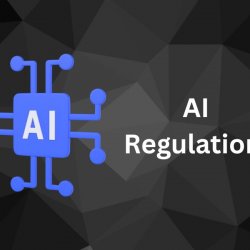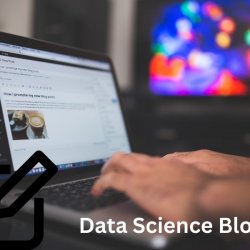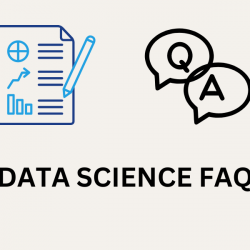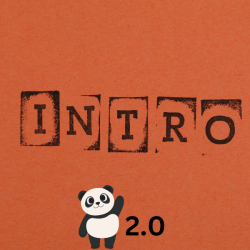What is Larger language models


What is Larger language models
What Are Larger Language Models?
What are large language models? It’s a type of artificial intelligence trained on vast amounts of data. By taking advantage of new advancements in natural language processing (NLP) and deep learning, larger language models are able to perform tasks such as understanding human input and generating text and predictions.
One way these models are created is through pretrained language models. This is the process of using huge datasets for training a model, such as the popular BERT (Bidirectional Encoder Representations from Transformers) model. This allows for transfer learning—the ability to take knowledge learned from, in this case, one domain and apply it to another—helping reduce the amount of time typically needed to train a model from scratch.
Next, these larger language models have to be able to represent words and capture contextual understanding. For example, a better understanding of the phrase “let it be” requires an understanding that it’s a phrase used for encouraging someone rather than an invitation to release something physically into the environment. Many current NLP technologies assign each word in a sentence with an embedding vector that can be used to calculate similarity between words and sentences, respectively helping with representation and context recognition.
In addition, larger language models require self supervised learning capabilities. This means that unsupervised learning tasks use unlabeled data sets so that the computer can explore different aspects of data not seen before in order to create its own set of conclusions or decisions about said data. These can be used for many things such as sentiment analysis or part of speech tagging (determining nouns, verbs etc). Future of Data Science Jobs in India
The Benefits of Using Larger Language Models
At its core, a larger language model is an artificial intelligence based system that uses machine learning and natural language processing (NLP) to generate meaningful text from a given set of data. These models are able to generate more accurate and detailed results than traditional methods of language processing. This allows for more efficient and comprehensive tasks such as comprehension, semantic analysis, text generation, sentiment analysis and topic modeling.
Larger language models are particularly advantageous for tasks that will require humanlike reasoning because these AI models have the ability to better understand nuances in the text. For instance, when trying to understand a complicated sentence written in English, a larger language model will be able to better comprehend the various phrases and ideas presented in order to deliver an accurate result. This makes them ideal for tasks that cannot be accomplished with simpler techniques like rule based systems or mere keyword searches.
In addition, larger language models are great for tasks such as translation and summarization because they can accurately replicate meaning between languages in order to produce much more natural sounding translations or summaries. Such precision is not possible with simpler algorithms which can lead to faulty results or misunderstanding tones within certain content.
The use of larger language models also helps reduce time spent on complex tasks by allowing users to quickly generate quality results without having to manually do so themselves. This frees up more time for users without having them sacrifice the accuracy of their work.
Common Features and Characteristics Found in Larger Language Models
They’ve become increasingly popular for applications such as sentiment analysis, which is the process of analyzing a person’s emotional state or opinion about a certain topic. By understanding these subtle nuances in the language, computers can more accurately gauge how people feel about particular topics. Another popular application is text summarization, wherein the computer takes a long piece of text and condenses it into a shorter form that retains the main points. Investment Banking Program
Larger language models have quite a few common features and characteristics. Most notably, they rely on neural networks to carry out deep learning tasks. Neural networks simulate the way neurons work in our brains, allowing them to pick up on patterns in data that are too complex for humans alone to discern. Additionally, they are capable of working with both structured and unstructured data; this means they can utilize information from both rigid databases as well as free text documents. Furthermore, they can create new representations for every word that’s fed into them—this not only allows them to develop more accurate interpretations but also makes them more adept at carrying out various linguistic tasks such as predicting sentiment or meaning behind words and phrases.
All in all, larger language models have revolutionized the world of AI technology and their usefulness will only continue to grow in the years ahead.
Examples Of Large Language Models In Use Today
Large language models are becoming increasingly important in today’s world. These models enable machines to understand natural language and process and produce text. There are several large language models currently in use, such as OpenAI GPT3, Google BERT, XLNet, Microsoft Turing, Facebook’s RoBERTa, the HuggingFace Library, and Flair.
OpenAI GPT3 is a transformer based autoregressive language model that generates humanlike text given a prompt or query. It builds on previous versions of GPT by increasing the scale and using a larger model architecture. It has been applied to various tasks such as question answering and summarization.
Google BERT (Bidirectional Encoder Representations from Transformers) is a deep learning model designed to process natural language by leveraging pretrained models for both language understanding and generation tasks. It can be used for question answering, sentiment analysis, text classification, and other NLP tasks.
XLNet (Generalized Autoregressive Pre Training for Language Understanding) is an autoregressive system based on the Transformer architecture that uses generalized permutation language modeling objectives to better capture long term dependencies than its predecessor BERT. Like BERT it can be used for question answering and text classification but it also provides improved results on various downstream tasks such as sentiment analysis and natural language inference. Investment Banking Certification
Microsoft Turing Natural Language Generation Model is an NLP system that can generate coherent natural language paragraphs from structured data sets such as tables or databases without any additional supervision or training data.
Pros and Cons of Larger Languages Modeling Techniques
Larger language models are a powerful tool for improving natural language processing. These models utilize larger datasets and corpora to increase accuracy and provide higher quality results, helping to understand natural language more effectively. Companies such as Google, Microsoft, and Facebook use these larger language models for text summarization, machine translation, and other applications.
However, there are several disadvantages to using larger language models as well. These models are quite expensive to train due to the large datasets required for reliable results. Additionally, the availability of these datasets can be a real challenge.
The benefits of using larger language models include improved user experience in voice assistants and other applications. With increased accuracy in natural language processing comes improved speed and performance in text summarization, machine translation, and other automated tasks that depend on understanding spoken or written words accurately. Additionally, larger language models help create a better understanding of natural language within algorithms allowing them to interpret commands with greater precision and accuracy.
In conclusion, while there are real benefits to utilizing larger language models within natural language processing algorithms, it’s important to consider the drawbacks as well when making an informed decision as to whether or not this is the right approach for your application or project. The costs associated with training these types of models can be quite high but so can the rewards if used correctly. Investment Banking Course
Challenges In Building and Maintaining Large Language Models
Building and maintaining large language models can be a considerable challenge. For starters, data requirements are one of the biggest obstacles. Large language models require tremendous amounts of data for training, and without sufficient material, models won’t be able to learn enough to become effective in the real world. When creating a model from scratch, the more data available, the better it will turn out – because with more information, language models are better able to generalize into real world situations.
Another challenge is that of computational complexity. Large language models require massive amounts of processing power to operate effectively. This means that you often need powerful computers and cutting edge hardware in order to build and maintain these models. If you want your model to successfully perform tasks such as natural language understanding or image recognition, then having the right set up is essential.
Finally, resources can be an issue when it comes to building and maintaining large language models. Not only do they require a lot of computing power and data, but also specialized personnel who possess experience in machine learning techniques to design and manage these systems effectively. Finding qualified people with experience in this field can be difficult if you don’t have access to a research team or similar organization.
These challenges illustrate why building and maintaining large language models is no simple task. While it’s true that advances in machine learning have made this achievable for many organizations with the right resources, there are still challenges that must be overcome along the way to ensure successful implementation and use of these powerful tools.
Conclusion-Leveraging the Power of Larger Modeling Techniques
The primary benefit of bigger language models is their ability to capture the complexities of natural language by learning from larger datasets. This allows them to better recognize patterns and produce better results than traditional models that are based on smaller datasets. Additionally, they can be used to generate new text, such as creative writing or descriptions of objects.
However, training large models comes with several challenges. For example, they require significantly more processing power and memory resources than traditional models. This may be difficult to manage and lead to high training costs. In addition, even after models are trained, it can be difficult to run them efficiently on devices with limited power or in environments where computing resources are at a premium. Corporate Investment Banking
Fortunately, there have been recent advances in utilizing parallel computing architectures for optimizing large model training processes. By utilizing distributed systems such as GPUs or TPUs (Tensor Processing Units), we are able to take advantage of the combined resources available within a cluster of machines and greatly reduce the time needed to train larger language models.
In addition to parallel computing advantages, transfer learning has also proven useful when working with large language models and datasets. Transfer learning involves leveraging existing language model weights saved from earlier pretrained models in order to “warmstart” subsequent ones during the training process. This reduces training time and makes it much easier to optimize neural networks using fewer iterations and less data than starting from scratch each time a new model is created. Investment Banking
Leveraging the power of larger language models is an important tool for any developer or organization looking to create more advanced applications.
Put simply, larger language models are a type of natural language processing (NLP) technology which uses deep learning techniques and generative models & networks to predict the next most likely words in a sentence. To achieve this, these models require training on large datasets, which can take significant computational resources.
The result of using larger language models is improved AI capabilities and more advanced applications that understand user intent better than ever before. For example, chatbots trained with such models can quickly identify the user’s objective and provide helpful information—in some cases even suggesting additional products or services.
More recently, larger language models have been used for text summarization and translation as well. With enough data, these models can be trained to generate meaningful translations without any manual intervention from developers. In time, we can expect even more advanced applications resulting from leveraging the power of larger language models.
In conclusion, leveraging the power of larger language models is an important tool for any developer or organization looking to create more advanced applications. Its use will ultimately result in an enhanced user experience as well as opportunities for AIpowered content generation and translation among other things.






Ingen kommentarer endnu